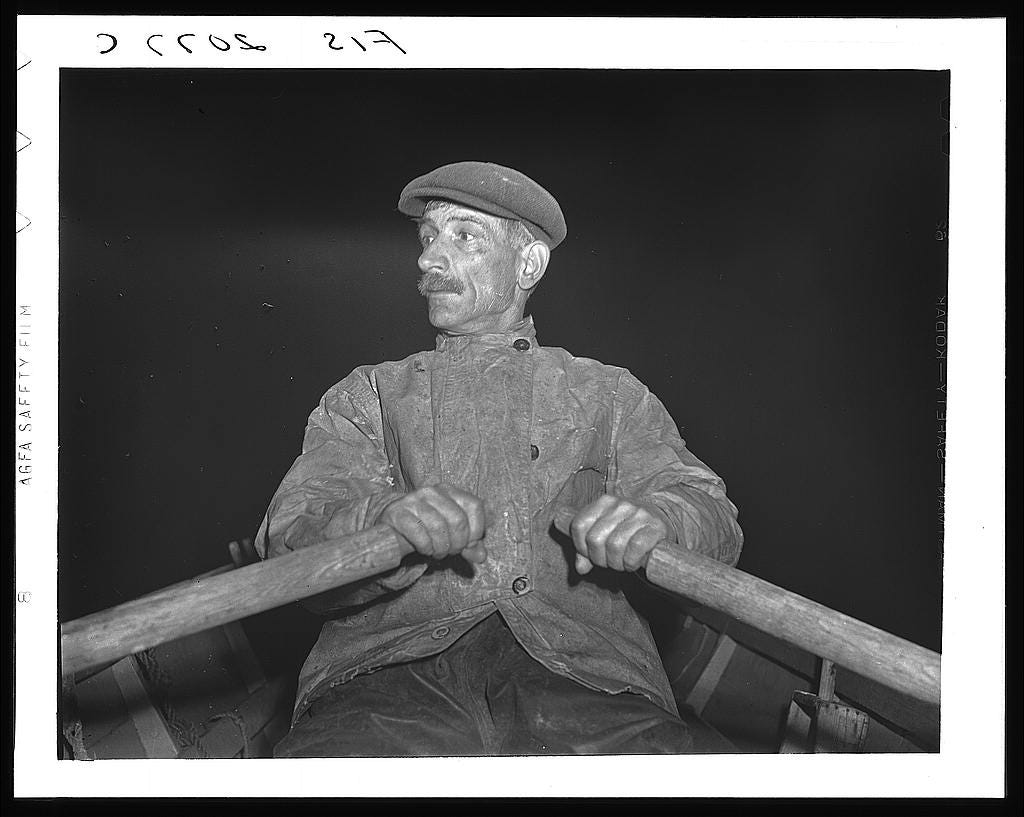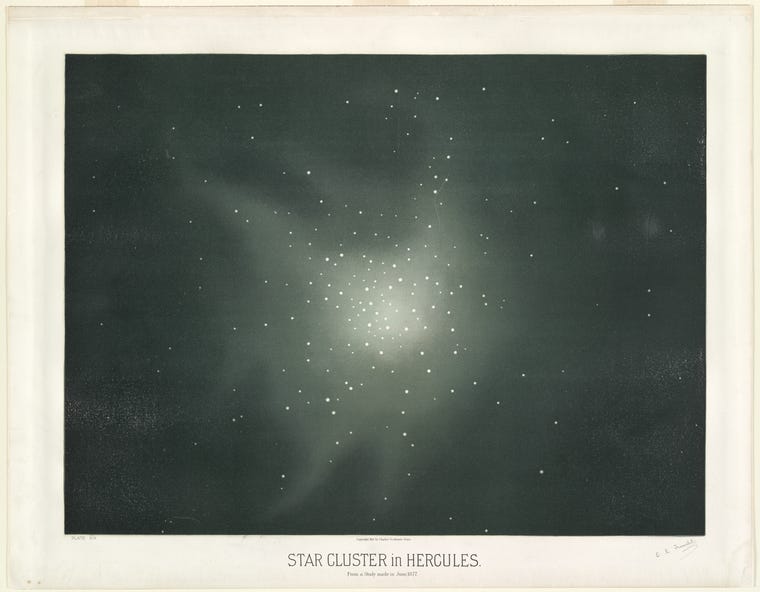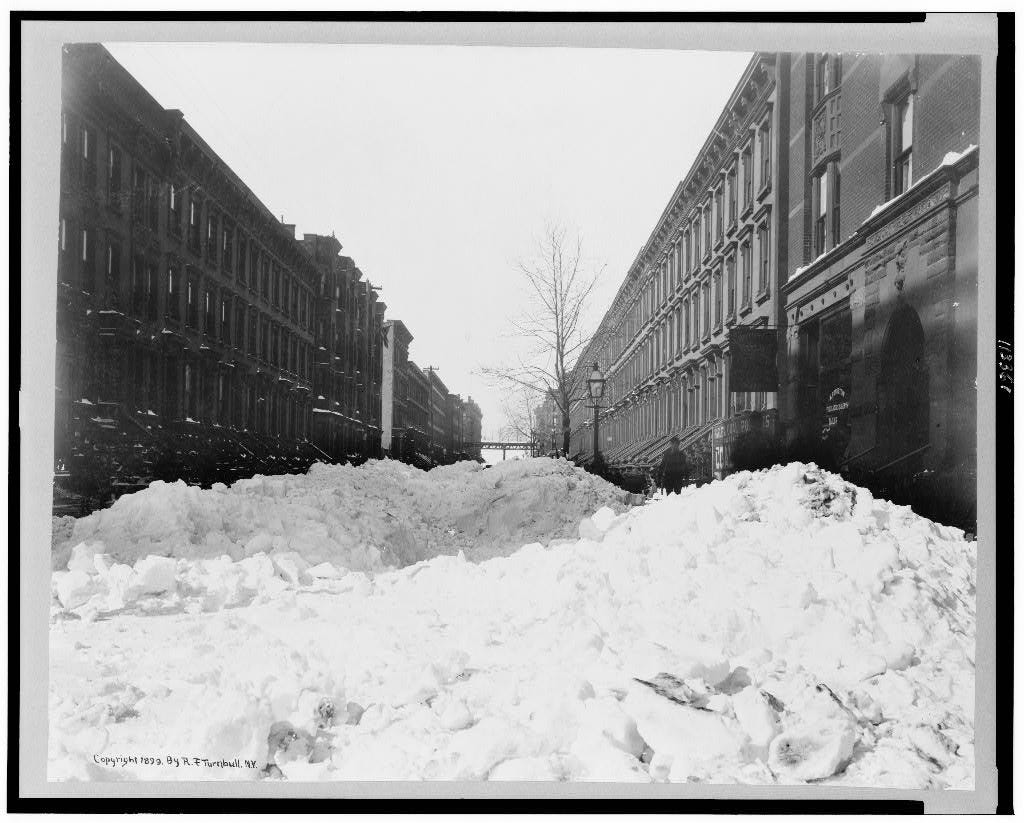Skandy the Polar Bear, and Other Ghosts of New York
In this newsletter: Ghosts, a list of places where the sun sets after 4:29 p.m., a bummer of an article about Omicron, and some words of advice.
Part I: Ghost Town
If a place can be haunted, New York City is the most haunted place. Think about it like Omicron. Why is this new strain burning through here first? Because lots of people live here jammed up close, and lots of people come here from far away. Same thing with ghosts. Think of the density of lives lived in New York City; the millions of people stacked up together, hurrying together down narrow streets, dying together in crowded hospitals. How many people have died in New York City? Five million? Ten million? If the dead can leave echoes that the living can hear, the city is resounding with them.
Below, a list of potentially haunted places in New York City, and a narrowly selected list of ghosts that could theoretically haunt them.
The Central Park Zoo
The Central Park Zoo, unfortunately, is haunted by the ghost of Skandy, the polar bear shot to death by a police officer in June of 1971 for the crime of eating an ice cream cone, and also eating the hand of the man who had reached into his cage to feed him the ice cream cone.
The Central Park Zoo got another polar bear to replace Skandy in 1974, which it named Skandy II. Skandy II actually killed a guy in 1982, which we can hope sated the need of the ghost of the first Skandy for vengeance, leaving him a more docile, even-tempered polar bear ghost.
Which would explain why no one was devoured by a polar bear at the Central Park Zoo between 1982 and the death of the very last Manhattan polar bear in 2013, and why the grizzly bears that eventually took their place have, so far, claimed no victims.
The Old Forward Building on East Broadway
The former offices of the Jewish Daily Forward are now a luxury condo at 175 East Broadway where the building workers wear shirts that have an old version of the Forward logo on the chest.
The ghost who haunts this building is not Ab Cahan, the editor who shaped the Forward and died in 1951. I know this because Ab Cahan definitely haunts the current offices of the Forward down on Maiden Lane; specifically, the entryway just after you step off the elevator, where there’s this shadowy outline of Cahan overlaid on the glass that always looks like an actual person standing there, watching you, when the elevator doors first open. There’s also a bust of Cahan there by the door that always looks you right in the eye as you walk by. Very eerie.
With Cahan up in the new digs, I’d wager that the ghost that haunts the halls of the old Forward building on East Broadway is a man known to his former colleagues as Comrade Mack Haskell, the onetime building superintendent, who was in his office one morning in 1924 when a stick-up gang showed up to steal the payroll.
This was a Friday, just after the men came from the bank in an armored car with the cash for payday. Five men slipped into the building with pistols and blackjacks, and walked up to the iron-barred cage where the cashier, Comrade Yefim Yeshurin, sat with the cash, sorting it for the pay packets. The men waved their pistols at Comrade Yefim, but Comrade Yefim wouldn’t let them into his cage, so they went to find Comrade Mack, who they knew had the key. Comrade Mack told them to go “to the devil,” so they clocked him on the head with a blackjack and turned back to Comrade Yefim, who realized their guns actually were probably loaded, and so he let them into his cage.
The stickup gang drove away in a Buick sedan with $11,358 and presumably had a very happy weekend. There was some suspicion of an inside job, but no one was ever caught. Comrade Mack’s later exploits have gone unrecorded, but it seems likely to me that a man willing to brave a blackjack’s blow to safeguard the cashier’s cage key would not have allowed death to end his watch over the premises, and that his ghost would likely still be hanging around 175 East Broadway, keeping an eye on the payroll.
There is, I suppose, the possibility that Comrade Mack was an ideologue, in which case he would have of course left when the Forward did in 1974, or if not then, then certainly when the building was converted into an expensive apartment building in 2004. Which would have doomed Comrade Mack’s ghost to roam the Lower East Side, looking for Yiddish socialism and finding only more luxury condos.
Central Park
When we think about a New York City landmark that a million people walk through every day; a place like Grand Central or Central Park or the Macy’s at Herald Square; a place that could be haunted by any of a hundred thousand likely ghosts; it’s important to be clear about what we’re talking about when we talk about ghosts.
It’s not useful to imagine ghosts interacting freely in some society of the dead; the ghost of a guy who died in a bike crash last Tuesday chilling on top of the east tower of the Manhattan Bridge with the ghost of a guy who got kicked in the head by a carriage horse while trying to cross the Bowery in 1852.
Ghosts are shadows left by the dead, and the dead are mortals locked in narrow bands of time, estranged from those whose lived before or after them. Just because a person dies shouldn’t mean that they are somehow freed from the bonds imposed by time and space. Death is not time travel, and so why should a person who dies suddenly be able to communicate with someone who lived before he was born?
Rather, imagine these ghosts as lingering hints of the city’s past; shimmering echoes that we can glimpse, under certain conditions, in certain lights, and which maybe can glimpse us, too. But which can’t glimpse each other, because that’s nuts.
So who would haunt Central Park? Obviously Henry J. Stern, the former commissioner of the New York City Department of Parks and Recreation, who died just a couple of years ago. Stern is, among many other things, the reason that every playground in the city has an animal sculpture, which is cool, and also the reason why every playground in the city has a flagpole with a yardarm, which is insane.
A yardarm is the thing on the boat that’s like three-quarters of the way up the mast, parallel to the deck. A spar, is the boat word for it, that sails can hang from. Flagpoles with yardarms are those flagpoles that look weirdly like they belong on a boat, or at a yacht club on the Sound.
“No one is going to agree on every yardarm,” Stern told the New York Times twenty years ago, in a vast understatement. Stern installed 750 of the yardarms on flagpoles without permission from what was then known as the Art Commission; there was eventually a lawsuit, and the chair of the Art Commission resigned twice, and the yardarms stayed up.
And to this day, the ghost of Henry Stern haunts the parks of the city of New York, enjoying his yardarms and whispering into the ears of passing bicyclists that the great thing about having power is that you can use it to impose your eccentricities on the entire goddamn city.
The Green-Wood Cemetery
I tend to think that there actually aren’t that many ghosts hanging around cemeteries? There can’t be much there for them. Like, could you imagine Joey Gallo or Boss Tweed’s ghosts just sitting around their graves at Green-Wood, of all places, looking at the monk parrots? Gallo is out at some nightclub; Boss Tweed is hosting some eternal beefsteak for his heavenly cronies. Leonard Bernstein is probably haunting dinner parties at Park Avenue co-ops? My point is that ghosts in general, and the ghosts of people buried at Green-Wood in particular, are probably too interesting to be wasting their eternities moping about in cemeteries.
The 79th Street Station on the 1 Train
This station is haunted by the guy I saw there once, maybe in the late 1990s, dripping blood from the stump where his left hand should have been. I suppose I don’t know for certain that he’s dead, but maybe you don’t need to die, exactly, to leave a ghost behind; maybe it’s just a ghost of that particular moment in that guy’s life that still hangs around, blood still seeping through the end of his stained bandage and falling in little drops to the floor in front of the MetroCard vending machine.
My Old Apartment
The place we used to live in Carroll Garden had the shakes. You’d only feel it at night, never during the day, and usually when you were for sure the only person awake in the apartment, and it felt like you were the only person awake in the building. This was not an imagined settling; no trick of the light. This was an actual shake. The wok we kept on top of the fridge would clatter, the poorly-fitted door of the glass-fronted Ikea cabinet we used as a pantry would rattle, the nice toaster we got for our wedding and were saving until our junky toaster stopped working made this little rumbling sound in its spot on top of this other Ikea cabinet we had, which we used as a coat closet.
The apartment looked out over the elevated part of the BQE, so I always imagined it was the passing eighteen-wheelers that shook the nice toaster. But in retrospect, that’s insane. It’s inconceivable that the vibrations really transfer down through the steel supports of the BQE, through a quarter mile of bedrock, and then up again into my railroad apartment, in such a distinct way that the shakes of a truck were discernible, while the shakes of a thousand cars were not. Much more likely, I’d say, is that the rattles were the work of a ghost.
Who this ghost might have been is hard to say. I knew a bit about the building and who had lived there before us, but not enough to guess at who might have an interest in haunting it. Without detailed knowledge of the history of the space, I can only offer my best guess, which is that the ghost was the combined spirit of the countless enormous mouse-sized cockroaches I killed while we lived there; cockroaches so large that they had footsteps you could hear from two rooms away.
Your Apartment
Haunted. My god, is it haunted. Your apartment, my apartment, every apartment. How many people have lived in those rooms you think of as your own? How many people have died there? New construction, old construction, doesn’t matter. There was something there before your building, someone to whom the space that’s yours and only yours once belonged. Maybe it belongs to them still, in some truer sense than it will ever belong to you. Is their ghost sitting behind you right now, watching? Yeah, for sure! Wave hello!
If you have thoughts on other ghosts and the places in this city that they might haunt, let me know and I’ll share your speculations in a future edition.
Part II: A List of Places Where The Sun Sets After 4:29 p.m.
What made starting work before sunrise almost pleasant back in the winter of 2019, when I got on the subway just before 7 a.m. every morning if I was on time, or just after 7 a.m. if I was a bit late, was that smug feeling you got when you stepped out of the apartment and it was still dark, and the streets were still pretty empty, and there you were, keeping farmers’ hours, while the other guy was still home eating his Crispix. It was that same rush you used to be able to get shouting at European tourists to get out of the bike lane on the old Brooklyn Bridge bike path, nearly running them down and just wallowing in self-righteousness. There are worse emotional states in which to start the morning.
These days, starting work before the sun comes up brings none of those pleasures. It’s hard to feel virtuous when you’re sitting hunched in front of your computer in the predawn dark, showered, perhaps, but not fully breakfasted; dressed, but not really.
It’s around that time when one starts to think of other places; places that aren’t so dark always. Here, for your convenience, is a list of places where the suns sets later these days than it does in New York City:
Islamorada, Florida: 5:36 p.m. // Atlanta, Georgia: 5:30 p.m. // Hazard, Kentucky: 5:17 p.m. // Charleston, West Virginia: 5:07 p.m // New Orleans, Louisiana: 5:03 p.m. // Bismarck, North Dakota: 4:55 p.m. // Ames, Iowa: 4:33 p.m. // Philadelphia, Pennsylvania: 4:37 p.m. // Trenton, New Jersey: 4:34 p.m. // Mordor, Middle Earth: 4:33 p.m. (I’m guessing?) // St. Paul, Minnesota: 4:31 p.m.
(Nice to complain about the darkness, which will begin to recede in a couple of days, rather than… the other thing…)
Part III: A ‘Viral Blizzard’
As for the other thing, I spent Friday reporting and writing this article about what to expect from the Omicron wave, which was an enormous bummer. Read it, but be warned: The news is not so great! Also this week, yet another entry in the continuing series I call “Josh listens to a CDC or FDA hearing so you don’t have to.” This one was about new safety concerns regarding the Johnson & Johnson vaccine. Also kind of a bummer! We did a Barron’s Live podcast this week with the Novartis CEO as the guest, hours after Novartis announced it was spending up to $15 billion of the $20 billion it made selling its share of Roche Holding. That’s here, if you’re interested.
Part IV: Words of Advice
Everyone says that the Abbott rapid tests are sold out everywhere online, but you need to just keep reloading. They’re cheapest at Walmart, and they’re definitely in stock from time to time.
Speaking of Walmart: Walmart sells a toy called “Squeakee Rainbowie the Balloon Dog Electronic Pet” that is blowing my mind. Among other things, it “may pee or fart” after you “inflate” it with a plastic pump, and you can "pop" it (???) with a pretend pin, thereby presumably murdering (???) your balloon dog electronic pet??? I don’t know, man.
Hildegarde with Guy Lombardo and His Royal Canadians, folks.
That’s all I’ve got!






